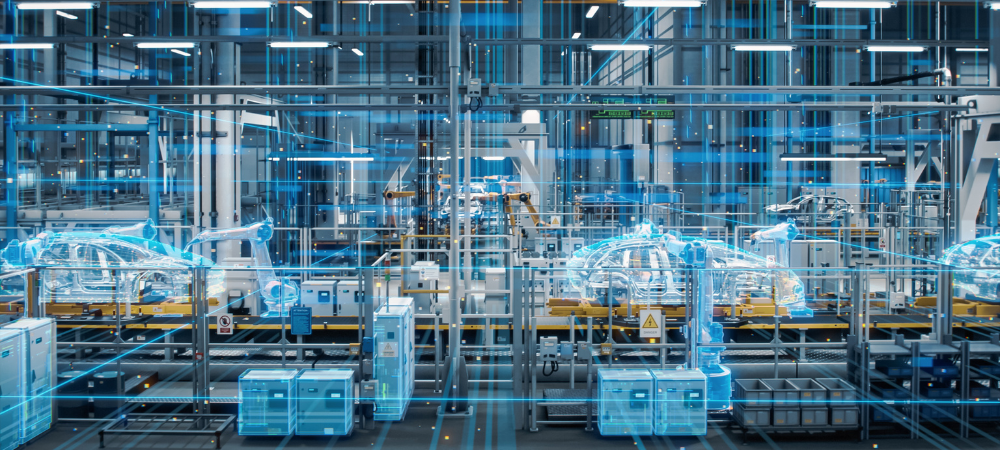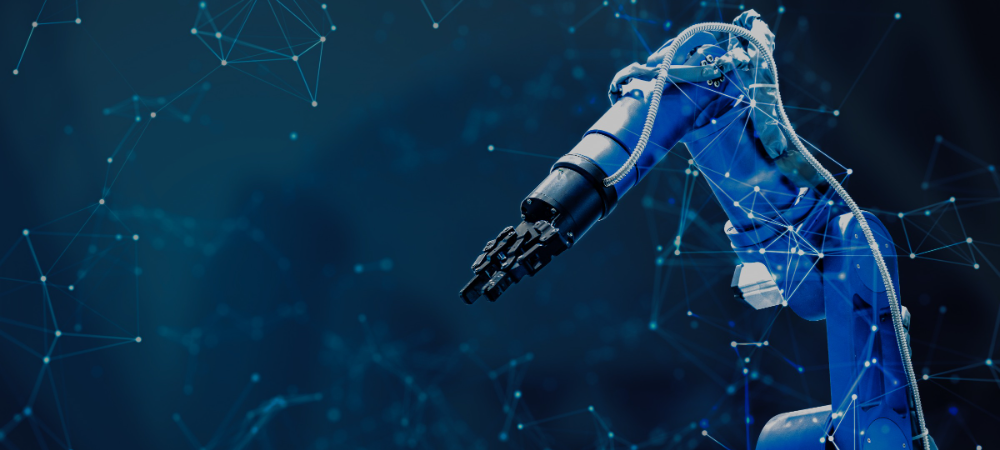Industry and technology never stop evolving, and ESI Robotics evolves with them. Industry 4.0 is part of our DNA. Known as the Fourth Industrial Revolution, Industry 4.0 embraces complex systems and advanced technologies that are changing the way production takes place and business models around the world. It is therefore essential to understand this concept and how the technologies involved are changing the industrial world.
To understand how this concept emerged, it's important to go back and review the three previous industrial revolutions and how each changed their times.

- FIRST INDUSTRIAL REVOLUTION
The steam engine's invention introduced a period that revolutionized the way industrial production was carried out at the time. This change occurred in the middle of the 18th century and marked the transition from manufacturing to machine-making.
- SECOND INDUSTRIAL REVOLUTION
The introduction of electricity marked the second industrial revolution. It took place around 1850 and, in parallel with technological advances, mass and large-scale production emerged through the rationalization of the means and processes of production.
- THIRD INDUSTRIAL REVOLUTION
Marked by the appearance of the computer and significant advances in the areas of IT, robotics, telecommunications, transportation, biotechnology and chemistry, the Third Industrial Revolution represents the adoption of sophisticated and complex technology.
INDUSTRY 4.0 | FOURTH INDUSTRIAL REVOLUTION
The fourth Industrial Revolution is the moment in which we find ourselves. With the advance of technologies and the recurrent use of the internet, we realize that everything and everyone is interconnected. Based on this premise, Industry 4.0 brings together disruptive and innovative technologies and methods that make it possible to interconnect machines, production systems and equipment. These technologies will give companies the ability to create intelligent networks throughout the value chain and thus control production processes independently. The Fourth Industrial Revolution takes advantage of industrial automation and the integration of different technologies such as artificial intelligence, robotics, the internet of things and cloud computing to promote the digitization of industrial activities, improve processes and increasing productivity.

The term Industry 4.0 was first used at the Hannover Messe trade fair in Germany in 2012. This concept originated in a strategic high-tech project by the German government, which promotes the computerization of manufacturing. The industry 4.0 Working Group, chaired by Siegfried Dais (Robert Bosch GmbH) and Henning Kagermann (German Academy of Science and Engineering) presented a set of recommendations for implementing Industry 4.0 to the German Federal Government.
This constant evolution of the ways and means of production brings with it different opportunities for different companies around the world. The Fourth Industrial Revolution brought increased productivity, efficiency and quality in processes, and safety for workers by reducing the number of jobs in dangerous places. In addition, with the interconnection of the real world with the digital world and data processing, many companies can manage data efficiently, which increases competitiveness.
Technologies of the Fourth Industrial Revolution
|

|
IoT – Internet of Things
This technology integrates all kinds of machines or equipment that are permanently connected to the internet, and which facilitate interaction between technological devices and people. Through their sensors (temperature, humidity, among others) they enable the intelligent collection and exchange of data and information for later analysis.
|
|

|
Artificial Intelligence
They are software and robots capable of simulating human abilities to make decisions and solve problems. To do this, they take advantage of algorithms, artificial neural networks and learning systems to apply and simulate human intelligence and reasoning to machines.
|
|

|
Big Data
In the Fourth Industrial Revolution, we can exchange information for data. Big data enables the management and interpretation of mass data for business purposes, especially relevant to predicting risks, optimizing processes and making decisions.
|
|

|
Cloud Computing
It allows you to keep data online, to access and manage resources via the internet. The information is stored on shared servers that can be accessed from anywhere in the world. This optimizes infrastructure and storage costs and enables remote management.
|
|

|
Robotics
Robots can perform an ever-growing list of tasks and are becoming more flexible, autonomous and cooperative every day. The integration of robots into large production lines is already a reality for many companies! The so-called "Cobots" are collaborative robots, which means that they work together with people to combine the workforce and human skills with automation.
|
|

|
3D and 4D Printing
3D and 4D printers make it possible to develop three-dimensional prototypes quickly, accurately and economically. This technology is increasingly used in different sectors, from design to engineering.
|
| |
|
SEE ALSO: Digital Transformation Opportunities for Different Industries
